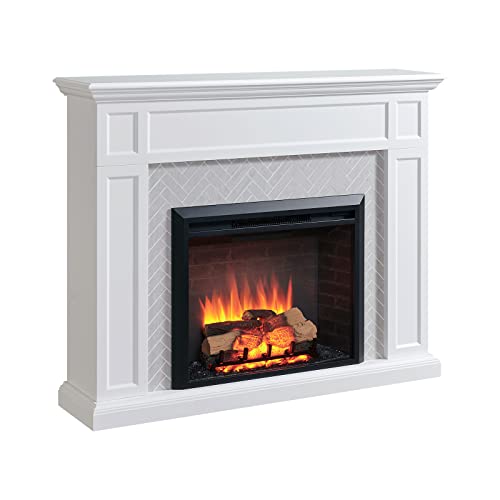- 작성자 Natalie Lalonde
- 댓글 0건
- 조회 87회
- 작성일 2025.07.27
본문
The Comprehensive Guide to Fireplaces and Stoves
Fireplaces and stoves have been important to human civilization for centuries, working as a source of heat, light, and convenience. These appliances can be found in various kinds and have actually evolved for many years, dealing with varied choices and technological developments. This article provides a helpful summary of fireplaces and stoves, highlighting their types, benefits, maintenance pointers, and setup factors to consider.
Kinds of Fireplaces
The world of fireplaces is abundant and varied. Here are the most typical types:
Wood-Burning Fireplaces:
- Traditional and captivating.
- Requires seasoned wood and regular maintenance.
- Produces a pleasant scent and crackling noise.
Gas Fireplaces:
- Offer convenience and ease of usage.
- Available in vented and vent-free options.
- More efficient and cleaner than wood-burning options.
Electric Fireplaces:
- Provide ambiance without the requirement for a chimney.
- User-friendly with remote control options.
- Can be used as an additional heat source.
Pellet Stoves:
- Use compressed wood pellets as fuel.
- Extremely efficient and ecologically friendly.
- Often geared up with thermostats for temperature control.
Ethanol Fireplaces:
- Utilize bioethanol fuel, making them portable.
- Do not require venting, which enables versatile placement.
- Produce a reasonable flame with minimal smoke.
Outdoor Fireplaces:
- Designed for outdoor settings; can be wood or gas-burning.
- Great for entertaining and enhancing yard looks.
- Frequently built from stone, brick, or metal.
Advantages of Fireplaces and Stoves
Including a fireplace or stove into a home offers many benefits:
- Aesthetic Appeal: Fireplaces work as striking centerpieces in any space, adding heat and character to home design.
- Increased Property Value: Homes with practical fireplaces tend to have greater resale values.
- Energy Efficiency: Modern fireplaces and stoves are developed to be more energy-efficient, which can result in reduced heating costs.
- Backup Heating Source: In case of power interruptions, wood-burning and gas fireplaces can serve as essential heating sources.
- Versatile Heating Solutions: Different kinds of fireplaces cater to different heating needs and lifestyles, from relaxing ambiance to efficient heating.
| Type of Fireplace/Stove | Fuel Source | Efficiency Rating | Maintenance Level |
|---|---|---|---|
| Wood-Burning | Wood | Moderate | High |
| Gas | Natural gas/LP | High | Low |
| Electric | Electrical power | High | Really Low |
| Pellet | Wood pellets | High | Moderate |
| Ethanol | Bioethanol | Moderate | Low |
| Outdoor | Wood or gas | Moderate | Varies |
Upkeep Tips
Proper maintenance extends the life of fireplaces and stoves, guaranteeing safety and efficiency. Here are some necessary suggestions:
Regular Cleaning:
- Wood-burning fireplaces should be cleaned up after a complete season of use to eliminate soot and creosote.
- Gas fireplaces need periodic evaluation of the burner and vents.
Routine Inspections:
- Have chimney sweeps perform annual assessments to recognize blockages or structural damage.
- Check the seals and gaskets on gas units to prevent leaks.
Fire Safety:
- Install smoke and carbon monoxide detectors in homes with fireplaces or stoves.
- Keep a fire extinguisher near the fireplace or range for emergency situations.
Use Quality Fuel:
- For wood-burning systems, always utilize skilled wood; avoid treated or painted wood.
- When utilizing pellets, guarantee they are kept effectively to avoid moisture absorption.
Handle Airflow:
- Keep vents and ducts clear to promote efficient ventilation and airflow.
- Think about utilizing glass doors or screens to minimize debris and ash in the living space.
Installation Considerations
Installing a fireplace or stove requires mindful factor to consider of a number of factors:
Location:
- Choose a place that permits correct clearance and ventilation.
- Think about the layout of your home and the convenience of natural heat circulation.
Building Regulations and Permits:
- Check local policies relating to installations and required permits.
- Engage an expert to ensure compliance with security standards.
Fuel Type:
- Evaluate your fuel alternatives based on schedule, cost, and environmental effect.
- If deciding for gas, ensure existing gas lines can accommodate the new device.
Ventilation:
- Proper venting is vital for security and performance, particularly for gas and wood-burning units.
- Seek advice from a professional to figure out the very best venting option.
Aesthetic Consideration:
- Select a style that complements your home's interior.
- Think about mantels, surround materials, and colors that match your decoration.
FAQs
What is the best type of fireplace for heating?
Gas fireplaces are typically more efficient for heating, while wood-burning fireplaces provide more ambient heat.
How often should I clean my fireplace?
Wood-burning fireplaces need to be cleaned a minimum of when a year, while gas fireplaces require less frequent attention depending on usage.
Can I install a fireplace myself?
While some property owners may try DIY installation, it is advised to work with an expert to ensure security and compliance with building regulations.
Are electric fireplaces efficient?
Yes, electric fireplaces are extremely efficient and can work as efficient extra heating sources, particularly in smaller sized areas.

What is the lifespan of a fireplace?
The lifespan of a fireplace varies depending on the material, type, and upkeep; however, a properly maintained wood-burning fireplace can last over 30 years.
Fireplaces and stoves stay classic functions in homes, offering heat and ambiance. Understanding the different types, advantages, and upkeep requirements can assist house owners make notified decisions about installation and care. With careful planning and routine maintenance, these home appliances can enhance both the comfort and value of a home for several years to come.
댓글목록 0개
등록된 댓글이 없습니다.

